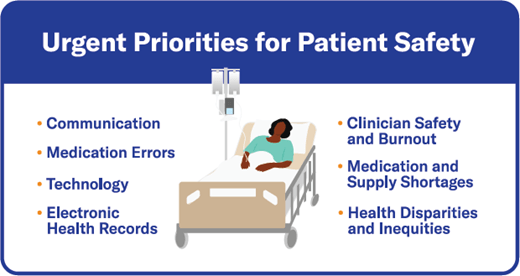As a specialty, anesthesiology has long been regarded as a pioneer in patient safety, having even been cited by the Institute of Medicine (IOM) as an example for other specialties to follow. Indeed, mortality attributed solely to anesthesia has declined from one death per 2,200 patients in the 1950s to one death per 45,455 patients in the 2010s.
Such improvements can be attributed not only to advances in anesthetic medications and machines, but also to standardization of vital sign monitoring. And yet, despite such significant strides, patient safety issues continue to plague health care, often due to problems with communication, teamwork, and safety culture. In fact, a recent incident in which a nurse faced criminal charges after the death of a patient due to the inadvertent administration of vecuronium instead of midazolam highlights continued issues with patient safety.
The ASA Committee on Patient Safety and Education (CPSE) is proud to present this special supplemental issue of the ASA Monitor highlighting some of the most urgent priorities for patient safety in 2024 and beyond. Given our shared goal of advancing safety, CPSE has collaborated with the Anesthesia Patient Safety Foundation (APSF) on several of these articles. The IOM’s seminal white paper To Err Is Human ushered in a new era of safety vigilence with an alarming statistic: nearly 100,000 patients, each year, died from medical errors.1 More recent literature has cited even higher numbers. Since then, there has been a shift in focus to investigation of the systemic causes of medical errors and intentional re-engineering of systems to decrease the possibility for error. In “After ‘To Err Is Human’ – What Are the Next Biggest Threats to Patient Safety?”, Methangkool et al. introduce emerging threats to patient safety, including technology, the electronic medical record, and medication and supply shortages, as well as burnout. As described by Fermin and colleagues, health disparities also pose a threat to patient safety, and urgent action is needed on individual, societal, and governmental levels to address these inequities. Other emerging threats include well-intentioned safety interventions that can produce unforeseen consequences.
In “Is the Cure Worse Than the Disease? How Solving Medication Errors Can Exacerbate the Problem” Brook and colleagues discuss how prefilled syringes, standardization of concentrations, and color-coded labelling, which can decrease the contribution of human factors to medication errors, may paradoxically also precipitate medication errors.
Published in GI-Mail 07/2024 (English edition).
- Do you already know our monthly newsletter GI-Mail with useful tips on postgraduate courses?
Sign up here. - Are you looking for vacancies or new career challenges? Here you will find the latest vacancies and job offers.
- Do you already know our monthly job-information GI-Jobs with current job offers for doctors, managers and nurses? Sign up here.
- Are you interested in up to date postgraduate courses and CME? In our education database »medicine & health« you will find new education events from over 2300 organizers.

